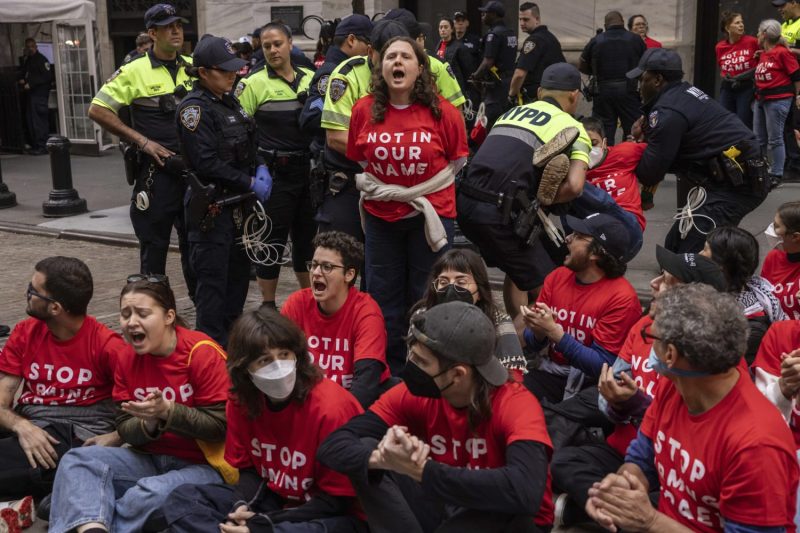The heart of Wall Street was pulsated with an entirely different rhythm as scores of protestors converged on the area to stage a sit-in outside the New York Stock Exchange (NYSE). Their mission was explicitly precise, to highlight the plight of the people of Gaza following successive attacks on the strip.
Inspired by a collective call to action, these protestors, hailing from various backgrounds and representing diverse affiliations, came together to voice out their opposition against the ongoing violence in the Gaza Strip. The sit-in was an attempt to spotlight Gaza’s plight and pressure policymakers to intervene and bring an end to the humanitarian crisis in the region.
Unlike the typical hustle and bustle associated with this financial hub, day traders, brokers, and financiers met a sea of posters, chants, and heartfelt speeches that filled the surrounding vicinity. Each speaker took turns recounting the devastating impacts of the attacks in Gaza, with emotions running high on both ends of the spectrum – from sorrow over the loss of lives to anger over global silence on the issue.
Central to the demonstration were images and videos, showcasing the destruction in Gaza from the recent attacks. Protestors held placards with messages like Stop the attacks on Gaza and End the occupation,” fervently seeking to provoke empathy and action amidst the predominantly corporate crowd.
The protestors sought to juxtapose the peaceful serenity of life in the U.S. with the chaotic and devastating daily reality for those living in Gaza – the sharp contrast serving as a powerful reminder of the luxuries of peace many tend to take for granted. However, the protest served a broader purpose, reflecting a growing trend among advocacy groups to mobilize and employ non-traditional tactics to ensure their voices are heard.
The use of the NYSE as the protest location was no coincidence. By choosing this global symbol of financial power, the protesters aimed to highlight the role of economic structures and multinational corporations that they believe contribute to the perpetuation of these conflicts. They wanted to send a clear message that economic impunity, support for armed conflict, and the lack of corporate social responsibility should not go unnoticed or unchallenged.
Digital media also played a notable role in this protest. With the power of social media at their fingertips, the protestors made sure that their messages echoed well beyond the physical boundaries of Wall Street. Real-time updates, live videos, and hashtag activism provided an effective platform, enabling global audiences to participate virtually and express solidarity with the protestors.
This sit-in serves as a stark departure from traditional protests often seen in the U.S. It represents a new wave of peaceful demonstrations where protestors are no longer just voicing their concerns but are also strategically crafting their message to influence the wider public discourse.
The protestors’ strategic choice of location, the empathetic appeal, and their integration of digital activism articulate a clear narrative that relates not only to the humanitarian crisis in Gaza but also shines a spotlight on the global community’s collective responsibility to pursue peace and justice in all corners of the world.
With no signs of their determination wavering, the protestors continue to be promising catalysts for change, hoping to stir global consensus and inspire swift action to bring lasting peace to the beleaguered region of Gaza.




